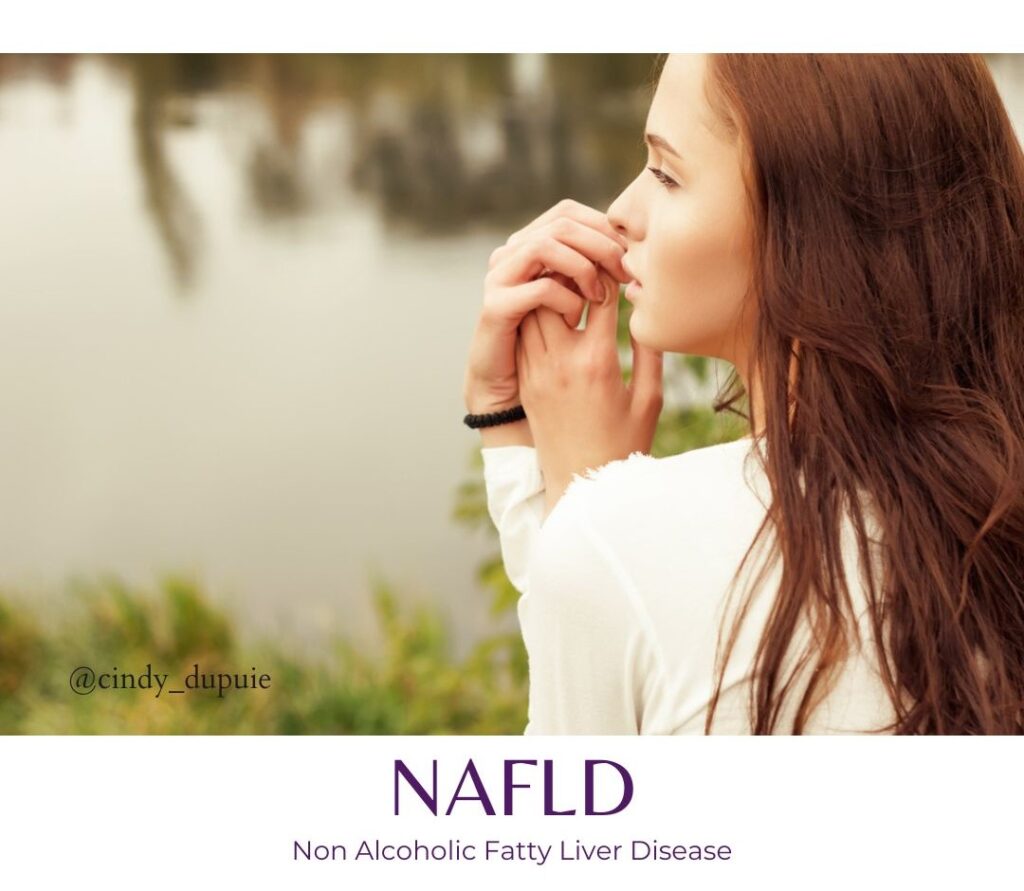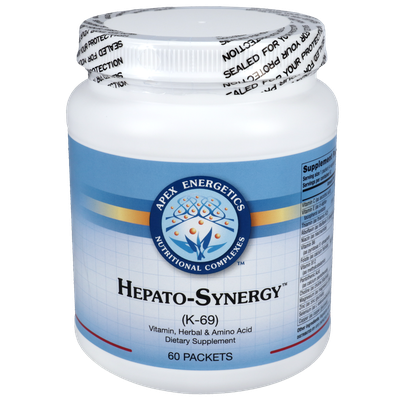
NAFLD (non-alcoholic fatty liver disease) affects over 25% of the population and the numbers are growing. In the past, this disease was primarily seen in older adults, but is now trending toward adults in their 30s and 40s and has unfortunately trickled down to adolescents and younger. That’s cause for alarm!!!
Let’s find out why this type of fatty liver disease is on the rise, what causes it, and how you can prevent it.
First, what is fatty liver disease?
A Fatty Liver results from the accumulation of fat deposits in the liver. It used to be caused mainly by excessive alcohol use. Now it’s most often caused by poor diet, lifestyle, loss of muscle, and environmental factors.
The liver becomes overburdened with the downstream effects of metabolic dysfunction (aka insulin resistance) elevated triglycerides and fasting insulin and cannot process nutrients and waste products efficiently. That’s a problem.
When fatty liver disease progresses, it can lead to fibrosis and cirrhosis of the liver, which are serious and life-threatening.
Non-alcoholic fatty liver disease (NAFLD) is a liver disease not caused by alcohol.
Non-alcoholic Fatty Liver Signs & Symptoms
In its initial stages, NAFLD rarely has any symptoms, so people are usually unaware they have NAFLD.
NAFLD is usually first detected in your doctor’s office. Your doctor may suspect NAFLD if you have :
- Elevated triglycerides or “bad” LDL cholesterol
- High HbA1c
- Increased levels of the liver enzymes alanine aminotransferase (ALT) and aspartate aminotransferase (AST)
-
Insulin Resistance
A high waist to hip ratio - Increased visceral fat (the fat that accumulates around your middle)
Fatty liver disease is driven mainly by diet & lifestyle but there can be four additional underlying factors.
Diet: Despite its name, the culprit behind a fatty liver is not fat per se. NAFLD is primarily caused by excess food intake, processed foods, fast food, and sugary drinks. Not only do these foods contain large amounts of sugar, but they also contain unhealthy fats that can further damage the liver.The liver plays a key role in removing excess sugar from the blood after a meal. Give it too much, too often and it becomes overburdened.
Glucose from excess dietary carbohydrates undergoes a biochemical process known as glycolysis in the liver and is eventually converted into triglycerides, then low-density lipoproteins for secretion. (that’s why paying attention to your triglyceride levels are, in my opinion, more important than your total cholesterol levels).
Lifestyle risk factors:
- Obesity
- Smoking
- Being Sedentary
- Sleep Apnea
She’s young, beautiful and has NAFLD. She doesn’t fit the narrative so what gives???
The other possible Risk Factors of Non-Alcoholic Fatty Liver Disease:
-
Hypothyroidism (which is often underdiagnosed)
- Compromised gut
- Exposure to environmental toxins
- Low nutrient status
These last four risk factors are where Functional Medicine comes into play. There are some folks out there who are eating great, move their body, are at an ideal body weight and still have a fatty liver. This will have their doctors scratching their heads, not knowing what to do next other than waiting and watching, which happens all too often in Western Medicine.
Why is this so important?
A fatty liver is linked to insulin resistance, heart disease, metabolic dysfunction, cancer, dementia and Alzheimer’s
Once fatty deposits overburden the liver, classic signs of metabolic dysfunction become apparent. The liver becomes insulin resistant and over-produces glucose and V-LDL. This results in poor blood sugar control, a decreased ratio of HDL to LDL, high triglycerides and an increase in insulin and A1c. (Good blood work is super important. If you need help with this, contact me)
Metabolic dysfunction is a major risk factor for cardiovascular disease (not cholesterol levels), neurodegenerative diseases like Alzheimer’s, and some cancers.
Metabolic health has now become a major focus in the treatment and progression of dementia. Many recent studies have focused on the increasing prevalence of dementia in patients with NAFLD.
The good news is that fatty liver is a reversible condition, especially in its early stages. There is no medication that can remove fatty deposits in your liver, but a fatty liver can often be reversed with diet and lifestyle changes, gut repair, less exposure to environmental toxins, and supplementation. Here’s what to do.
*Avoid foods that place a burden on the liver
Alcohol, ultra-processed foods, soft drinks, and other foods sweetened with HFCS. Limit sugars and carbohydrates as they’re converted to fat in the liver and stimulate triglyceride synthesis.
*Weight loss
If overweight, get help losing it. Some studies suggest that losing 10% of your body weight may be the most effective way to reverse fatty liver disease. Keeping a low carbohydrate intake focused primarily on fiber-rich vegetables, healthy fats, and sufficient protein can help achieve this goal.
*High antioxidant and anti-inflammatory food intake
AKA, eat foods that have lots of different colors. Berries, greens, omega-3 fats from fish and seafood, plus naturally anti-inflammatory spices like turmeric and ginger can help. Let’s add in some cruciferous veggies to help with glutathione production which is our master detoxifier.
*Optimize methylation to detox the liver
What the heck does that mean???? It basically means that you need adequate amounts of B vitamins and magnesium to aid with methylation which is a key biochemical process to help the liver detoxify. Methylation deficiencies are common. Some people have a genetic predisposition that impedes their ability to methylate properly and may need additional supplementation.
*Reduce exposure to toxins
Environmental toxins like pesticides, herbicides, cleaning supplies, air fresheners, fabric softeners, tap water and heavy metals can contribute to fatty liver disease. Reducing your exposure to these toxins is important.
Supplements to support Non-Alcoholic Fatty Liver Disease
The liver needs certain nutrients to function optimally, including the amino acids taurine and glycine, B vitamins, magnesium, zinc, selenium, and vitamins C and E. Additional nutrients can be key as well:
- Omega 3’s to reduce inflammation
- Vitamin A to reduce fibrosis
- Alpha-lipoic acid, Coenzyme Q10 to support mitochondrial function, help with fatigue associated with NAFLD and rejuvenate the liver cells
- N-acetyl cysteine (NAC) to promote glutathione production which enhances detox capability
- Liposomal Glutathione (BTW-Tylenol inhibits the production of this master detoxifier)
- The magic of simple herbs:
Milk thistle, one of my favorite herbs, has long been used to treat ailments affecting the liver. It stimulates our detox pathways, regenerates liver cells, reduces liver scarring, lowers liver enzymes and fatty deposits. 300-400 mg/day
Turmeric helps to prevent metabolic syndrome, HBP, and diabetes all of which sets the stage for NAFLD. It also assists glutathione in its job of detoxifying. 500-1000 mg/day.
My FAVORITE liver support is Hepato-Synergy. Click on the image to order this from my dispensary.

Functional Medicine Labs to Test for Non-Alcoholic Fatty Liver Disease
- Gut function analysis. Comprehensive gut testing is recommended to patients with NAFLD. A stool analysis can examine gut bacteria, as well as identify leaky gut and other underlying infections.
- Inflammation markers. In response to inflammation, the liver releases CRP, a protein that indicates you have a health issue somewhere in the body.
- Blood sugar and metabolic markers, like fasting insulin. The metabolic evaluations revealed the cause underlying NAFLD.
- The fatty liver index is a non-invasive screening tool that uses an algorithm of waist circumference, triglycerides, and gamma-glutamyltransferase (GGT) to identify fatty liver.
I invite you to schedule a chat with me to help you spot chronic health issues early. Click on the button below.
Let’s stop and reverse NAFLD, especially in our younger folks!!!
Just a P.S: Medications are processed through the liver and add another layer to your already overworked liver. If you’re taking more than 2 medications on a regular basis, it’s important to support your liver. AND if you’re one of the millions of people taking a statin, which blocks the production of CoQ10, make sure you’re supplementing with CoQ10.